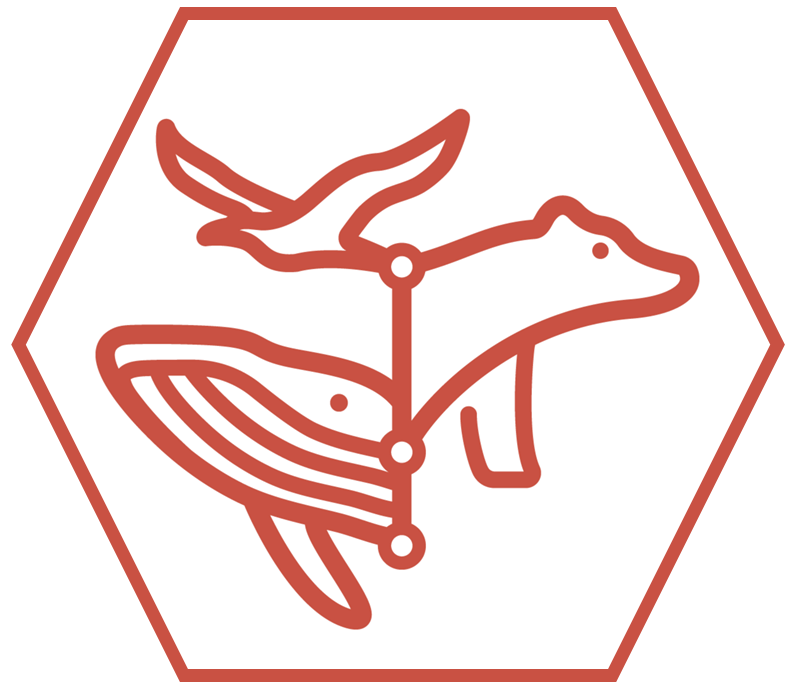Workshops

McDonald Data Sciences maintains two lists of workshop topics. Ready-to-go workshops are those that have been taught relatively recently, have relatively stable outlines, and are relatively cheap to host. Available workshops are not quite “ready-to-go” because their content requires updating (i.e., Dr. McDonald has not taught them in a while). Available workshops are usually more expensive than ready-to-go workshops. Contact Dr. McDonald (email: trent at mcdonalddatascience.com) for more information.
Ready-to-Go Workshops
Beginner Distance Sampling
Conventional line and point transect distance sampling, with covariates, in R.
Description
Estimating population abundance is a fundamental task in wildlife biology. Distance-sampling, implemented as line-transects or point-transects, is one of two primary abundance methods, the other being capture-recapture. Distance-sampling estimates abundance by correcting for detection that declines with increasing distance between observer and target. Conventional distance-sampling approaches which can contain detection covariates (e.g., Buckland et al. 2001, and basic models in Program Distance) have a rich history.
This workshop will introduce participants to conventional and hierarchical line and point transect methods for distance-sampling analysis in Program R. Participants will be able to identify and implement appropriate methods for a given study design. Participants will be exposed to multiple case studies of conventional and hierarchical distance sampling analyses in R.
Target Audience
The workshop is designed for managers, researchers, and students with a basic understanding of statistics and working familiarity with Program R. Someone who knows how to subset a data.frame, fit and work with lm and/or glm model objects in Program R should be able to follow our examples and utilize workshop scripts. Everyone, including R newbies, should benefit from the foundational ‘why’ and ‘when’ and ‘what’ discussions.
General Outline of Topics
Session 1: Half day
- Welcome
- Conventional distance sampling (no covariates)
- Line transect methods and example
- Point transect methods and example
- Conventional distance analysis with detection covariates
- Methods and case study
- Case study 2
- Combined species detection functions, separate species abundance
Session 2: Half Day
- Introduction to heirarchical distance sampling
- Case study 3
- Real-world aerial surveys
- Case study 4
- Real-world aerial surveys
- Question and answer
Software
Example datasets, scripts, and other materials will be distributed via download. The workshop will use the following free software:
Software installation instructions will be provided ahead of time.
Instructors
The instructors have conducted and consulted on distance-sampling studies of diverse taxa across the globe, including surveys from the ground, air, and sea. This workshop is a new distillation of beginner content, based on what we’ve learned from past workshops hosted by The Wildlife Society, Society for Marine Mammalogy, Wyoming Game and Fish Department, and University of Wyoming.
Trent McDonald, Ph.D., President and Chief Analyst, McDonald Data Sciences
Jason Carlisle, Ph.D., Quantitative Biologist, Wyoming Game and Fish Department
Embere Hall, Ph.D., Science Unit Supervisor, Wyoming Game and Fish Department
Costs
Negotiable. Costs depend on format, length, expenses, etc.
Available Workshops
McDonald Data Sciences is always open to developing custom statistical and quantitative ecology workshops tailored to individual client needs. The following is a list and brief description of past workshops taught by Dr. McDonald:
Habitat Modeling: Habitat modeling in ecology is similar in nature to consumer modeling in marketing studies. Habitat modeling utilizes animal locations to estimate habitat selection functions that identify both attractive and unattractive habitat characteristics (relative to random selection). Once important characteristics of resources or habitats are identified, maps of high and low relative selection probability can be drawn and critical habitats can be identified. Geographic Information Systems (GIS) are integral parts of modern habitat modeling.
Capture-Recapture Analyses: Capture-recapture studies in ecology seek to estimate either demographic parameters (survival, emigration, immigration, births, etc.), abundance (total number or organisms in a group), or both. Capture-recapture studies generally involve capturing organisms, marking them with unique identifiers (tags), and attempting to re-capture them later. Under various assumptions, the proportion of unmarked organisms among all organisms and the total number of marked organisms can be used to estimate the total number of organisms (abundance) in a population. Capture-recapture studies can be applied to both changing (“open”) and unchanging (“closed”) populations. Modern capture-recapture studies utilize capture location and geographic distances between activity centers and capture effort to improve estimates of abundance.
Computer Intensive Statistics: Computer intensive statistics is statistics (i.e., hypothesis testing, confidence intervals, ANOVA, regression, etc.) using permutation, bootstrap, and simulation methods to determine significance. Parametric statistical distributions, such as the normal or t or F, are not used to determine significance. The simplicity of methods behind computer intensive statistics helps many practitioners develop better intuitive understandings of their problems and equips them with results that depend on fewer assumptions.
